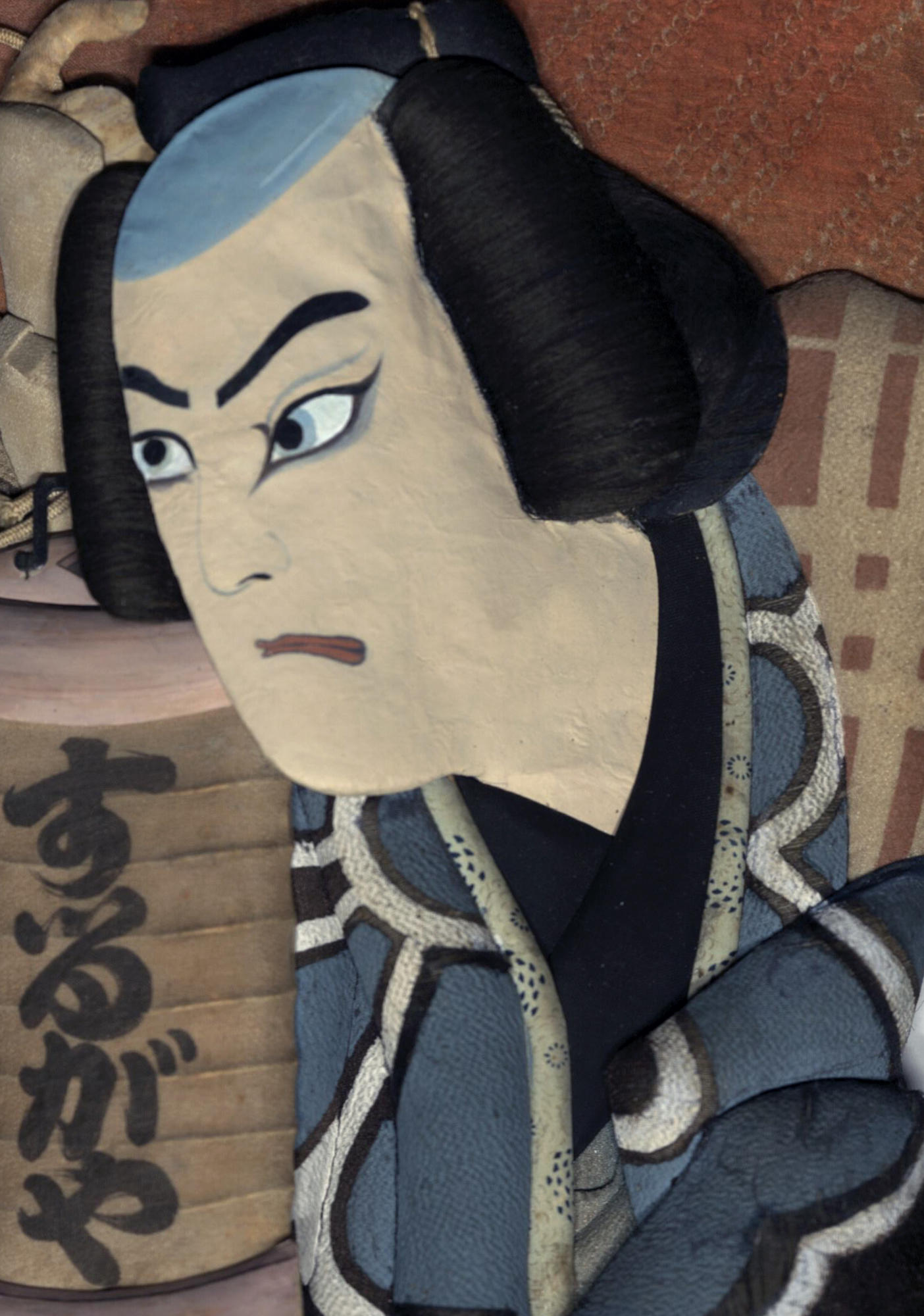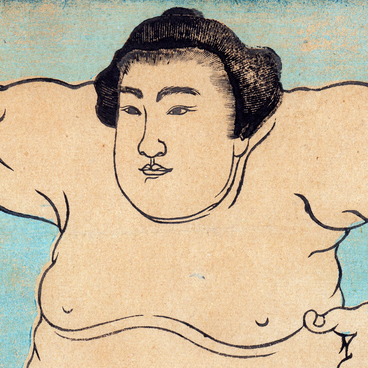The character on the racket is the same as on the poster: Banzui Chobei from the play ‘Suzugamori’. Raising the lantern, Chobei looks at the samurai Gonpachi, wanting to make sure of his art. Just now, Chobei witnessed Gonpachi’s fight with his enemies. Decorated with appliqués shuttlecock rackets were called “osie-hagoita.” They were presented as souvenirs and symbolic gifts. The shuttlecock (hanetsuki) was preceded by ancient rituals of expelling evil demons by hitting them with a board accompanied by a prayer for good health. Later, the board was named hagoita. The children’s play with shuttlecock was symbolic, like a ritual of protection from summer mosquitoes. Beginning in the Meiji period (1868-1912), rackets were often decorated in the technique of ‘osie, ” textured applique work.
Decorative racket for playing shuttlecock
Creation period
Japan, 1920s
Technique
Wood, silk, velvet, cotton wool, handmade
Collection
Exhibition
8
Open in app#1
A decorative racket for playing shuttlecock
#2
read morehide
Decorative racket for playing shuttlecock
Creation period
Japan, 1920s
Technique
Wood, silk, velvet, cotton wool, handmade
Collection
Exhibition
8
Open in app
Share



